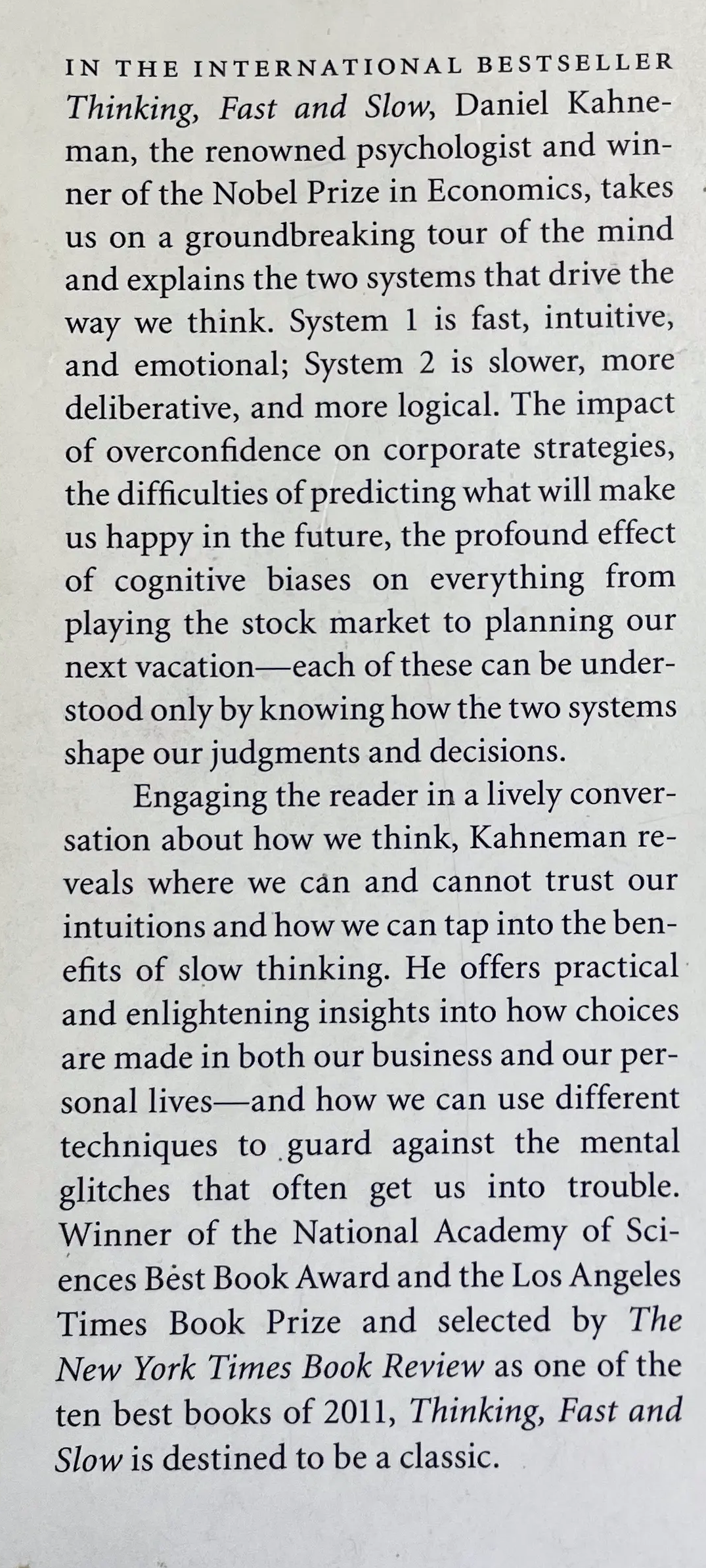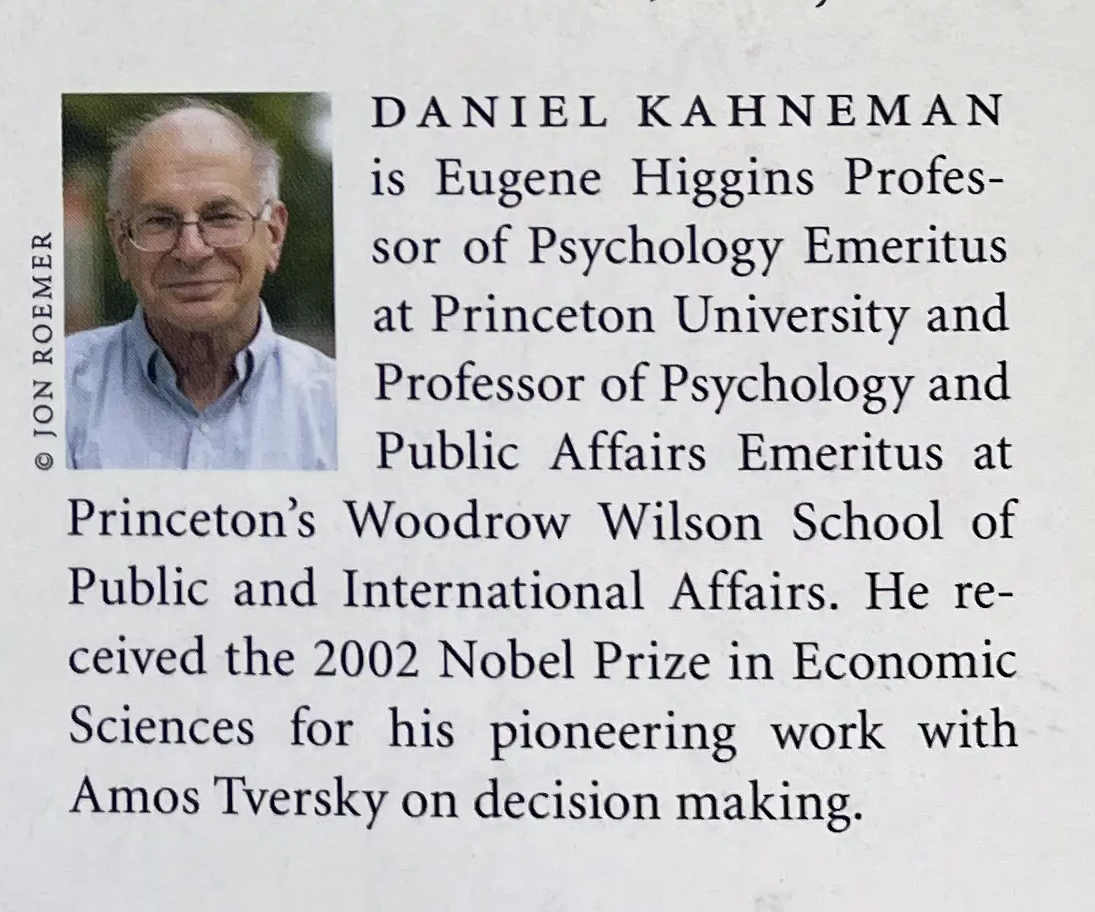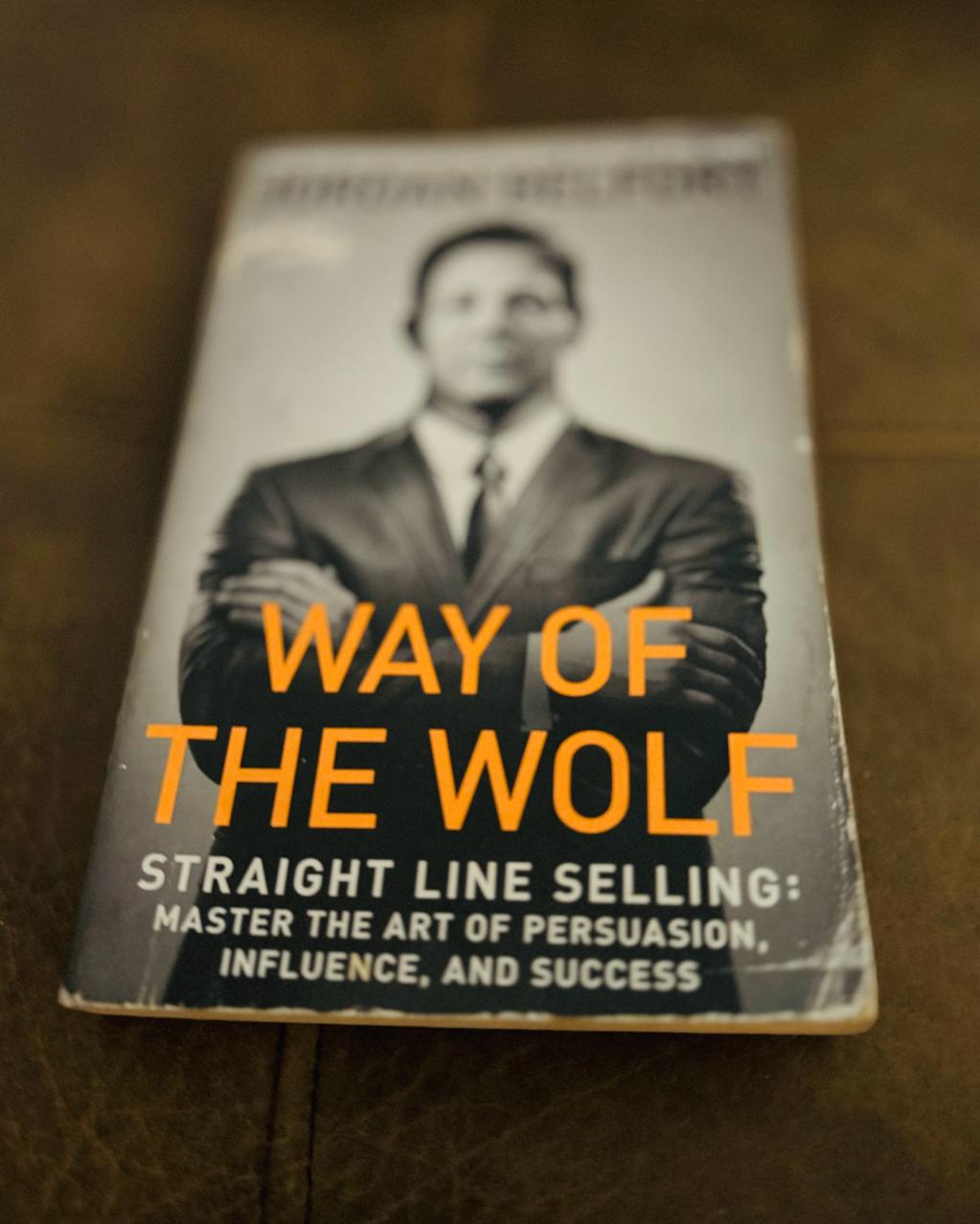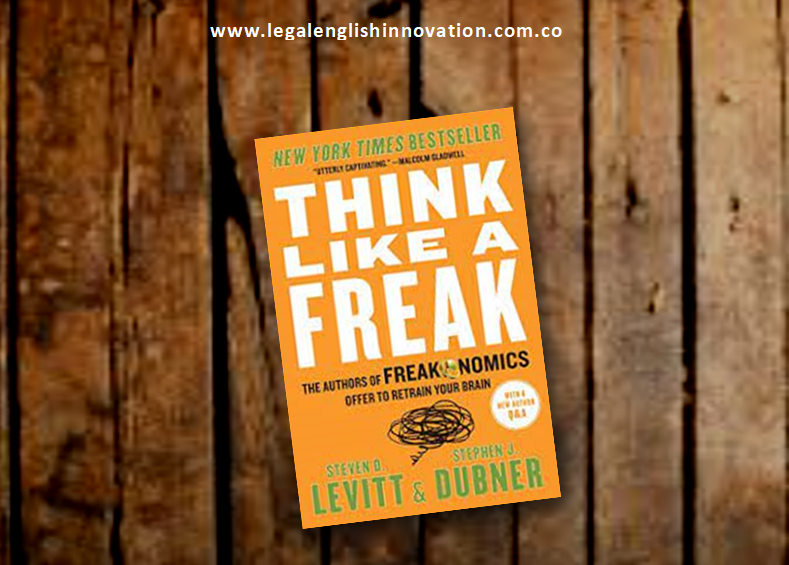Thinking Fast and Slow
This book review will contain the following phrasal verbs. Make a list and try to figure out their meaning in context of the text.
Phrasal Verbs
to check out
to move on
to turn on
to figure out
to set out
to hang out
to run into
to sum up
to draw to
to grow up
“Thinking, Fast and Slow” by Daniel Kahneman is a deep dive into how we think. Kahneman, who won a Nobel prize in economics but is trained as a psychologist, breaks down our thinking into two parts: the quick, gut-feeling way and the slower, more thoughtful way.
The book is quite long, which can make it a bit challenging to read. It’s best to take it one chapter at a time. Some parts might seem less interesting, but it’s important to pick out the main ideas.
This book has made a big impact. It’s changed how experts view behavioral economics over the past twenty years. It gives readers new tools to understand their own thinking and make better decisions.
In conclusion, “Thinking, Fast and Slow” is a very important book that offers deep insights into our minds. If you want to learn more about why we think the way we do, this is a must-read.
Introduction
Your Brain Has Two Systems: System 1 (fast, intuitive) and System 2 (slow, analytical)
It’s an incredible, but slow experience reading Thinking, Fast and Slow (or listen to the audio book). As you read through the book, you will run into a series of problems that you will need to try to figure out.
Here’s an example. Remember your immediate response as you read it.
The Notebook and Pencil Problem
A notebook and a pencil cost $1.10 in total.
The notebook costs $1.00 more than the pencil.
How much does the pencil cost?
The majority of the people say that the pencil costs $0.10, which is incorrect (the answer is $0.05).
What happened here?
System 1 (the fast, quick, snake-like side that works on intuition) made a snap, “it’s ok” answer.
It was only when System (the slow, analytical part of your brain) was turned on that you could understand why $0.05 is the correct answer.
Did your mind fool you? Are you bad at math? No, this is your brain working exactly as it is supposed to, and the reason for that is due to this concept of Cognitive Ease as seen below.
to turn on
to figure out
to run into
2. Cognitive Ease: Your Brain Wants To Take The Path of Least Resistance
The mind can be lazy. It likes to hang out and only do what it really must.
It likes things that are familiar, it likes things that are simple to figure out. It is drawn to things that make it feel safe and sound.
Repeated Experiences
Clear Display
Primed Idea
Good Mood
to hang out
to figure out
to draw to
3. Question Substitution: When Faced With a Difficult Question, We Answer a Cognitively-Easier One
Can you identify which is system 1 and 2?
Original Question
Should you buy a boat?
Are you happy with your life?
This woman is applying for partner? Will she be selected?
System 2
Substitute Question
Do I like boats?
What is my mood right now?
Does her appearance and style match what a top-level partner looks like?
System 1
For really critical questions (presentations, performance reviews, job interviews) we are likely to consciously turn on System 2. But for many things, we’ll instantaneously swap the difficult question for an easier one that System 1 can figure out.
to turn on
to figure out
4. WYSIATI (What You See Is All There Is)
Close your eyes and picture a friend who has grown up in a country that eats rats as a delicacy. Also imagine that friend has enjoyed this food all their life, and has several friends who have say the same thing. However in our culture, if we ran into a rat in restaurant, would be terrified. “rats = terrifying”
But what they see is “rats = delicious” and it will be near impossible to convince them otherwise.
to grow up
to run into
5. Framing and Choice Architecture: Your Opinion Can Change Depending On How You’re Asked
You ran into a problem. You’re sitting in the attorney’s office.
The attorney looks at some papers. They look at their assistant. He looks back at you and says you may be sued.
Then they move on to their next line and and say:
“The chance of you losing is 10%.”
Take a second to think about how you felt reading that sentence. Now imagine they said this instead:
“The odds of winning are 90%.”
Feel a little bit better?
to move on
to run into
6. Base Rate Neglect: When Judging Likelihood, We Overvalue What “Feels” Right and Undervalue Statistics
Attorney or Farmer?
“Tom is very timid and reserved…he has a need for order, structure and has a passion for detail.”
Is Tom more likely to be an attorney or a farmer?
a) Tom is an attorney.
b) Tom is a farmer.
Here we run into a problem, because if you’re like most people, you will have intuited that he is a attorney, because of the description; while ignoring the reality of base rates. That is, there are far more farmers than attorneys in the world. Based on the short description set out, it “feels right” that Tom is an attorney, yet it is statistically likely that he is a farmer.
Here’s another example that hopefully sets it out clearer:
“John is very intelligent and loves to read. He is a strong advocate of LGBTQ rights and attends rallies and parades.”
Which one is more likely?
a) John is an attorney.
b) John is an attorney and is gay.
Hopefully you will have realized that there are more people in (a) than there are in (b). If your brain keeps telling you that the answer is (b), then it just proves the strength of Base Rate Neglect.
to set out
to run into
7. Sunk Costs: We Hate The Idea of “Wasting” What We’ve Already Put In
Close your eyes and imagine that your boss gives you a free English seminar. You check out the course and the topics look great and excellent teachers. Schedule looks interesting. You are enthusiastic to go.
Move on to Day 2 of the conference. Day 1 was a bomb: the teachers were bad and networking has been awkward. Day 2 looks like more of the same.
Do you feel like you have to attend the rest of the conference?
to check out
to move on
Conclusions
Thinking, Fast and Slow will teach you how to think and organize ideas. Then make and form their own choices and opinions much differently. This is not a fast book to read, however — nor should it be. There is too much to be enjoyed.
About Eric Froiland
Eric Froiland is Colombia’s top legal English teacher with more than ten years under his belt. Many of Colombia’s leading universities, law firms, and journals vouch for his expertise. Off the clock, Eric is an avid reader with a keen interest in literature, especially the works of Kurt Vonnegut and Ernest Hemingway. He’s also ventured into dog training; however, if you ask his dog Pinot, there might be some debate on who’s really in charge.






